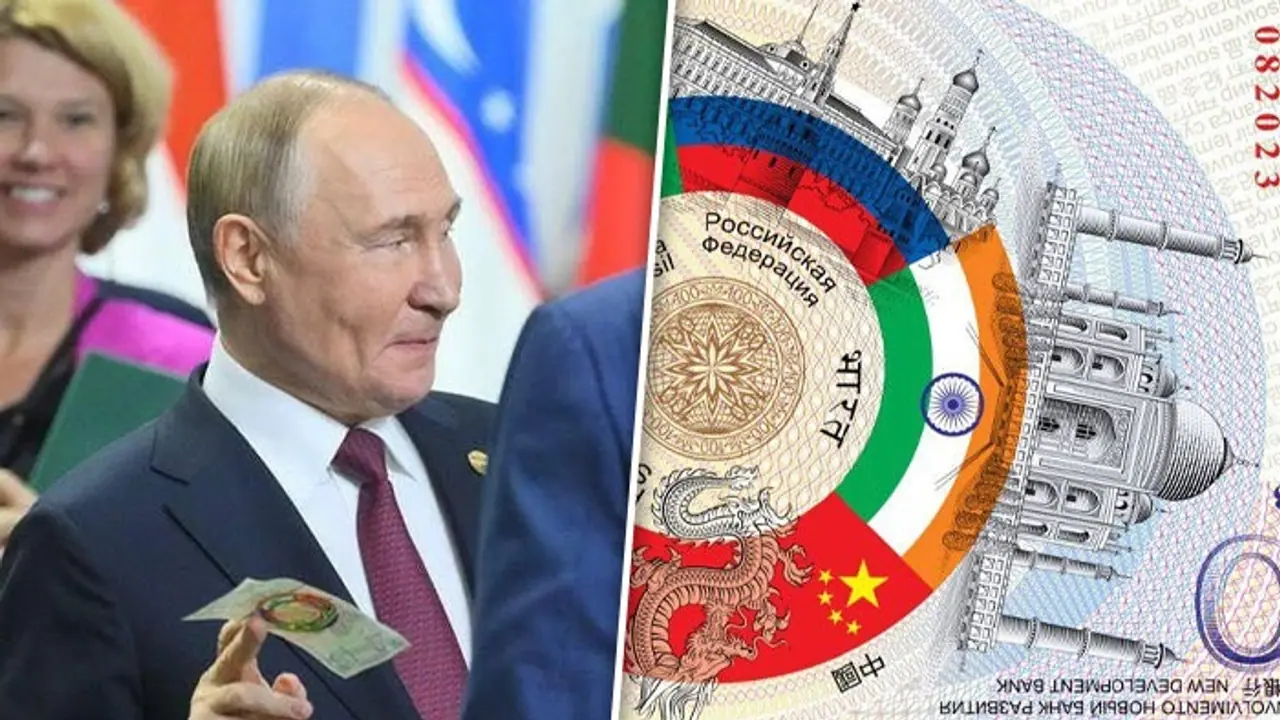A heated debate has erupted on social media platform X, formerly Twitter, following the unveiling of a mock-up BRICS currency note, featuring the iconic Taj Mahal, in Kazan, Russia.
A heated debate has erupted on social media platform X, formerly Twitter, following the unveiling of a mock-up BRICS currency note, featuring the iconic Taj Mahal, in Kazan, Russia. The note, displayed by Russian President Vladimir Putin, is part of a proposed single BRICS currency aimed at de-dollarizing global trade and solidifying economic cooperation among the alliance’s members.

The new BRICS currency bill prominently displays the flags of the five member nations—Brazil, Russia, India, China, and South Africa—encircling the central denomination of 100. However, it is the depiction of the Taj Mahal on the note that has sparked widespread outrage, particularly among some Indian social media users, who have voiced their disapproval of the monument's symbolic representation.
Public backlash over Taj Mahal on BRICS currency note
The mock-up BRICS bill has spurred a social media storm as several Indians expressed sharp disagreement over the selection of the Taj Mahal, a grand mausoleum built during the Mughal era, to represent the country. Some users noted that instead of the iconic monument, the newly built Ram Temple in Ayodhya or the national emblem of Ashoka Chakra, would be a more appropriate representation of India on the note.
One user on X wrote, "This is the banknote of a single BRICS currency which will replace the US dollar. It has a picture of the Taj Mahal on it. I have mixed feelings about it. Taj Mahal has been promoted as being synonymous with India for ages, which I don't agree with. But then what else can be put on the note?"
Another user was more direct, stating, "Taj Mahal (a tomb) is not a representative symbol of India. This image should be removed from BRICS currency, and priority should be given to other great monuments of India. We do not hate the Taj Mahal because it is a beautiful monument, but I do not want this tomb to represent India."
A third user argued, "Taj Mahal in this mock-up ‘BRICS BILL’ should remain a mock-up because if it really ends up on any BRICS currency in the future, it’ll be mocking Indian people, culture, and identity. Big time. Instead, Ram Mandir will aptly fill the bill."
"Mock-up designs of a BRICS currency bill are floating around with the Taj Mahal. But if we’re capturing the spirit of New India, why not showcase the Ram Mandir in Ayodhya? It symbolizes revival, unity, and 500 years of patience," said another user.
Another netizen remarked, "President Putin unveiled a banknote for a unified #BRICSCurrency, set to challenge the dominance of the #USDollar. Shouldn't #India consider replacing the Taj Mahal on its currency with a more contemporary symbol while we still can? Maybe #RamMandir."
Here's a look at some of the reactions on X:
BRICS aiming for de-dollarization
The BRICS currency, set to be backed by 40 percent gold and 60 percent local currencies of member states, is expected to serve as a vital step toward the bloc’s goal of de-dollarization.
On Wednesday, Chinese President Xi Jinping made a historic announcement regarding BRICS' new payment system. “There is an urgent need to reform the international financial architecture,” Jinping said.
“BRICS must play a leading role in promoting a new system that better reflects the profound changes in the international economic balance of power,” he added.
The official commission of the BRICS currency is still a thing of the future, but the creation, done with the aid of blockchain technology, has seen its attractiveness advocated in other ways. The currency is envisaged to work around the SWIFT system and other Western payment systems.
